Physical Address
304 North Cardinal St.
Dorchester Center, MA 02124
Physical Address
304 North Cardinal St.
Dorchester Center, MA 02124
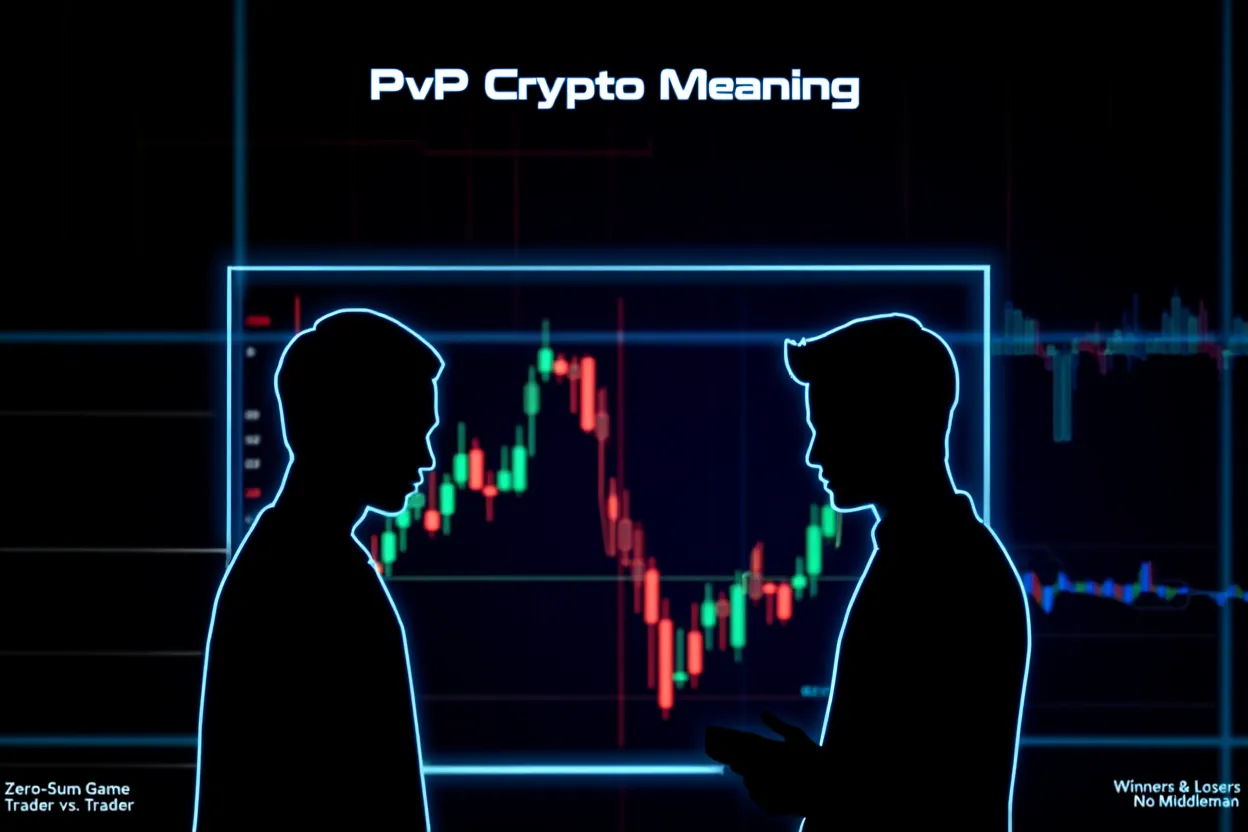
PvP, short for “Player versus Player”, originates from online gaming, where it describes direct competition between live participants rather than against automated systems or the game environment. Recently, this competitive philosophy has made significant inroads into the cryptocurrency ecosystem—fueling new trends in GameFi, DeFi, and NFT-based projects. The adoption of PvP mechanics in crypto is accelerating as users seek more engaging, skill-based, and potentially lucrative interactions.
According to DappRadar, more than 1.1 million unique wallets interacted with blockchain games daily in 2023, and that number continues to rise with the growth of PvP-centric projects like Axie Infinity and Thetan Arena. For both new and experienced crypto users, grasping the “PvP crypto meaning” is increasingly crucial—not only to understand blockchain gaming, but also to assess DeFi products, strategic trading, and evolving market dynamics. This foundational understanding allows users to navigate opportunities, manage risks, and participate more intentionally in tomorrow’s crypto trends.
This introduction paves the way for a closer look at how PvP operates uniquely within the crypto environment, its leading examples, and real-world implications.
In crypto, “PvP” goes beyond its gaming roots to refer to interactions and protocols where users compete directly against each other over assets, rewards, or outcomes. Rather than collaborating to beat a system (as in PvE), PvP models pit users against one another, whether in blockchain gaming battles, NFT competitions, or even high-frequency trading contests in decentralized finance (DeFi). This dynamic serves as a backbone for emerging crypto economies, where player skill, strategy, and timing can materially impact winnings and losses.

Leading industry sources like Binance Academy highlight PvP as integral to play-to-earn (P2E) games and zero-sum DeFi ecosystems. Prominent projects such as Illuvium and DYDX demonstrate how PvP mechanics are embedded in both gaming and trading platforms, creating engaging environments but also unique risks and rewards.
| Feature | PvP in Gaming | PvP in Crypto |
|---|---|---|
| Main Environment | Online video games | Blockchain apps, DeFi, NFT platforms |
| Participants | Players (human vs. human) | Wallets/users (human vs. human, bots included) |
| Motivations | Fun, skill mastery, rankings | Financial rewards, asset gain, reputation |
| Typical Outcomes | Ranking, leaderboard, in-game prizes | Earnings, token/NFT gains or losses |
| Examples | Esports, battle arenas | Axie Infinity battles, DeFi trading duels |
Understanding these distinctions clarifies why “PvP crypto meaning” is central—and where it shows up most often in real-world blockchain products.
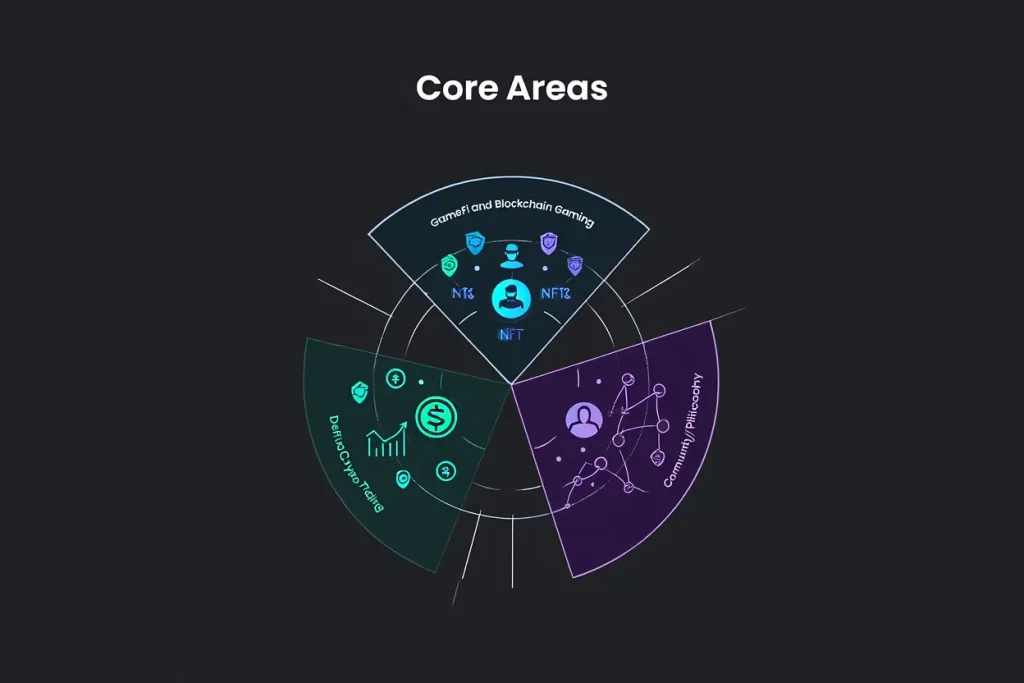
PvP mechanics are at the heart of the GameFi revolution. In blockchain games, users battle each other using NFT-based characters, weapon upgrades, or in-game assets, with rewards often paid in native tokens or additional NFTs. These dynamic, on-chain encounters transform gaming from a pastime into real economic activity, where winners receive tangible value that they can sell, stake, or trade.
This ecosystem incentivizes both rivalry and collaboration (for example, through guilds or alliances), but the spotlight remains on direct player competition as the primary driver of value and engagement.
For example, DEXs’ leaderboard competitions often see thousands of participants vying for pool rewards. Like GameFi PvP, this form drives user engagement—but can induce high volatility and intense rivalry.
PvP’s influence goes beyond game code or trading algorithms—it often shapes the very culture of a crypto project or its community:
This philosophy energizes many online spaces but can also foster short-lived hype cycles and intense groupthink.
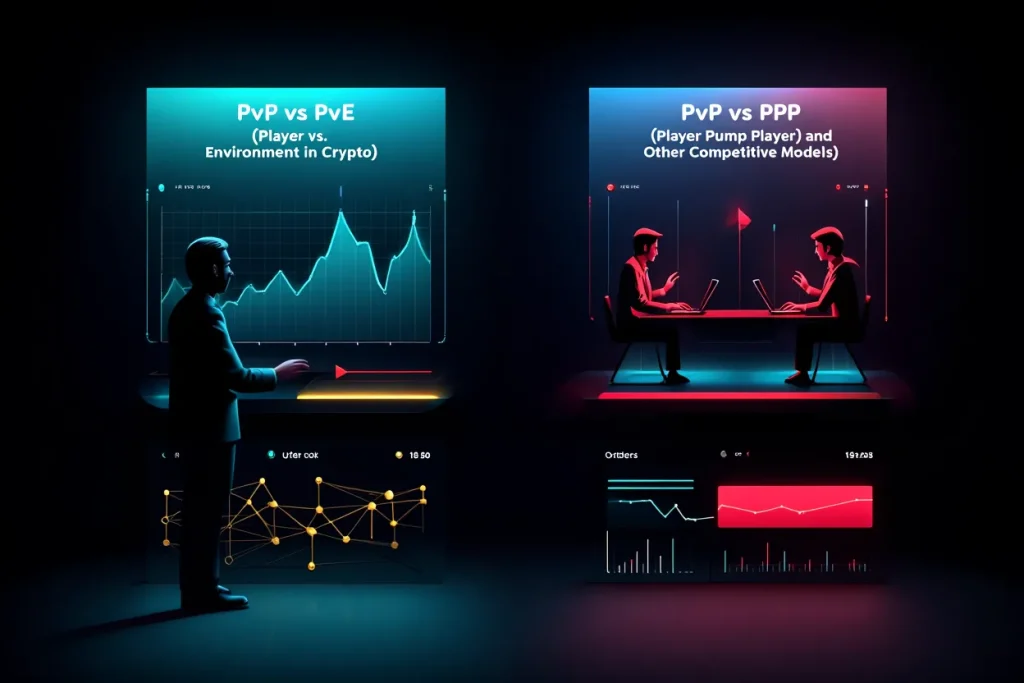
While PvP focuses on player-vs-player competition, “PvE” (Player vs. Environment) refers to users collaborating to achieve shared objectives set by game logic or protocols—rather than directly competing against one another. In crypto, PvE mechanisms often appear as collaborative staking, decentralized autonomous organization (DAO) missions, or cooperative game quests. Compared to PvP, PvE usually promotes more sustainable and community-driven token economies, as users pool resources or solve challenges together instead of extracting value from each other.
| Attribute | PvP | PvE |
|---|---|---|
| Competition | Direct user rivalry | Users vs. protocol/goals |
| Rewards | Winner takes more | Shared or distributed |
| Community | Competitive, sometimes adversarial | Cooperative, supportive |
| Token Growth | High volatility; bursts of volume | Steady, gradual appreciation |
| Examples | Axie battles, trading tournaments | Staking pools, DAO quests |
This distinction sets up a better understanding of hybrid or alternative models.
“PPP” (Player Pump Player) describes activity where groups or individuals band together to artificially drive up the value of a token or asset, often to cash out on others (sometimes bordering on market manipulation). This stands apart from fair PvP, where competition is transparent and skill- or luck-based. There are also models blending elements, like “PvPvE” (a mix of competition and environmental challenges).
| Model | Attributes | Motivations | Effects |
|---|---|---|---|
| PvP | Direct peer competition | Skill, profit, prestige | Dynamic market/pricing, winner-loser |
| PvE | Collaborative vs. protocol | Shared rewards, teamwork | Steady growth, community building |
| PPP | Group-driven price moves | Short-term profit, hype | High risk, volatility, manipulation |
See more related articles:
These case studies highlight the diversity and real economic impact of PvP models in both user entertainment and asset allocation. As these systems become more common, stakeholders must carefully weigh the pros and cons of such highly competitive mechanics.
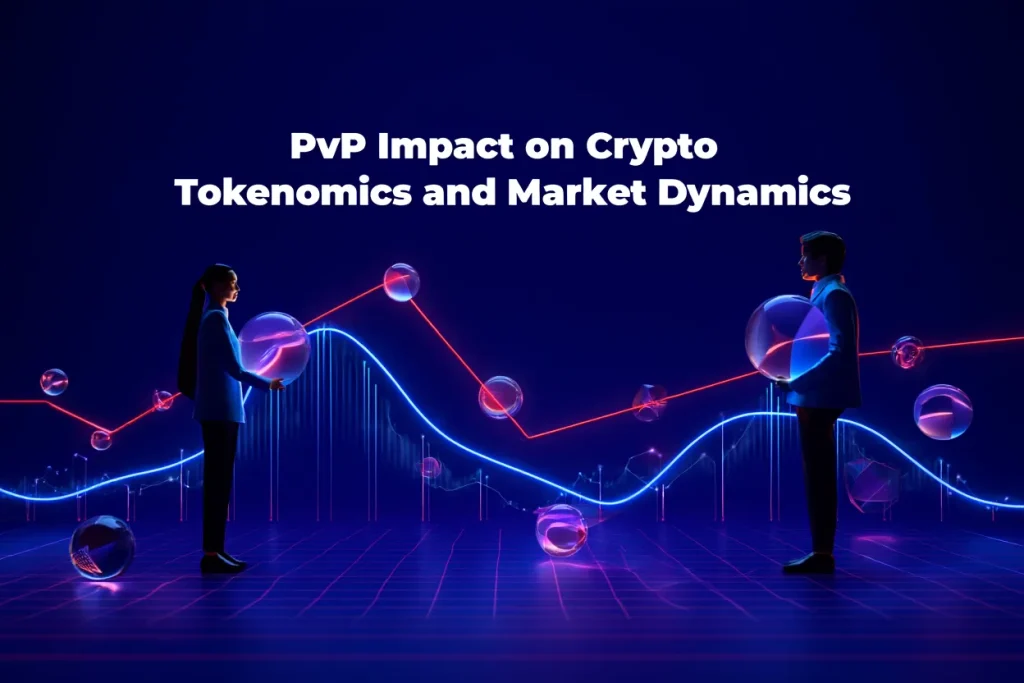
Understanding PvP’s impact on tokenomics is critical for navigating crypto market trends in 2025.
PvP-driven projects often see increased asset turnover, high trading volumes, and swift price movements during competitive events. These dynamics can quickly pump the value of tokens and NFTs, as seen in the meteoric rise of Axie Infinity’s SLP token during its PvP heyday. Yet, high volatility can just as rapidly drive values down; for instance, when player earnings outpaced new user inflows, SLP suffered a prolonged price crash.
Similarly, PPP-style pump groups frequently cause boom-and-bust cycles—impacting not just in-game assets but also the wider market’s trust and stability. Alternatively, gaming projects like Illuvium have implemented more sustainable PvP tokenomics, limiting inflation and aligning incentives through staking and real utility. Both success stories and failures illustrate PvP’s power to shape liquidity, user behavior, and ultimately, long-term ecosystem viability.
“PvP mechanics have transformed blockchain games from niche hobbies into dynamic economies with real value—and real risk. Maintaining a balance between fun and fairness is the challenge.” – Aleksander Larsen, Co-Founder of Axie Infinity (source: Messari 2024 GameFi Report)
Community feedback is mixed. Surveys by The Block Research show many users love the excitement and real earnings potential of PvP, but express concern about whales and unfair competition. Analyst consensus suggests that well-designed PvP can attract mainstream attention, but must address sustainability and onboarding challenges for continued growth. Across leading forums, recurring advice includes researching a project’s reward distribution, understanding the team’s transparency, and looking for systems that encourage both skill and fairness.
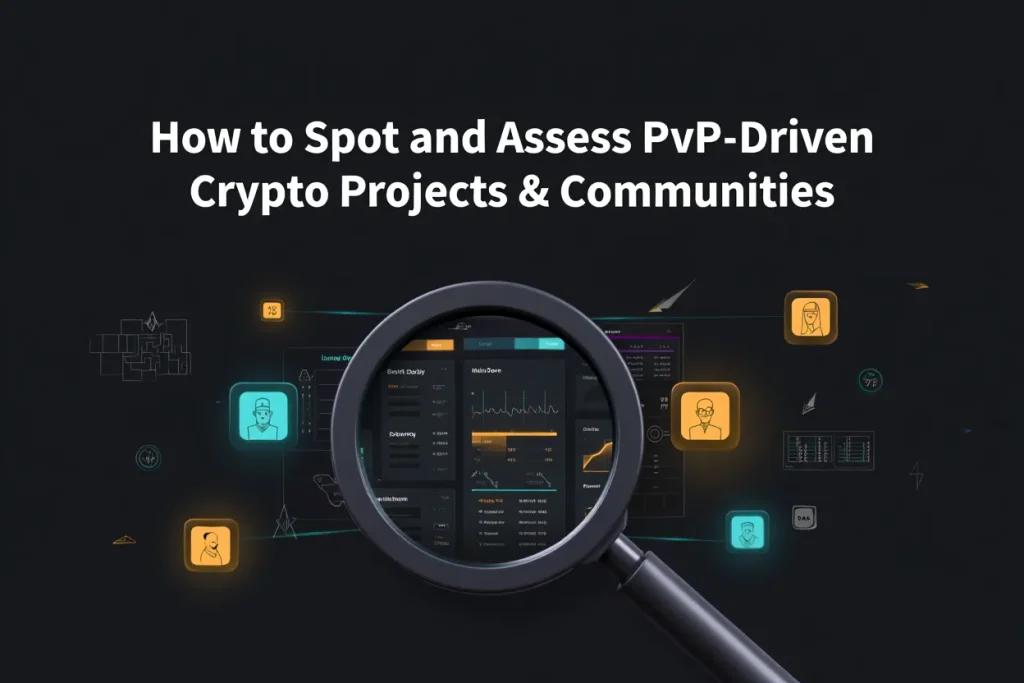
PvP is evolving the crypto landscape, blending the excitement of direct competition with real economic opportunity and risk. Its mechanics are found in everything from GameFi battles and NFT face-offs to DeFi trading showdowns and token market games. While PvP drives engagement, liquidity, and innovation in crypto, it also introduces new challenges that require active, informed participation. Understanding the “PvP crypto meaning” helps both beginners and experienced users navigate trends, assess projects, and make wiser investment and gameplay decisions as we head further into 2025 and the next generation of blockchain applications.
At webtaichinh, our mission is to provide you with clear, unbiased insights into the world of cryptocurrency through the Cryptocurrency category, helping you navigate complex topics with confidence, without hype or hidden agendas.
Webtaichinh delivers real-time financial updates, ensuring you stay informed about market trends, policies, and global economic developments. As part of our commitment to excellence, we provide accurate information and in-depth analysis, empowering investors to make swift, confident decisions in a dynamic financial world.
For inquiries or personalized assistance, feel free to contact us:
📞 Phone: 055 937 9204
📧 Email: webtaichinh@gmail.com
💻 Website: https://webtaichinh.vn/
📍 Address: 13 Ho Tung Mau, An Binh, Di An, Binh Duong
At webtaichinh, your financial success is our mission.